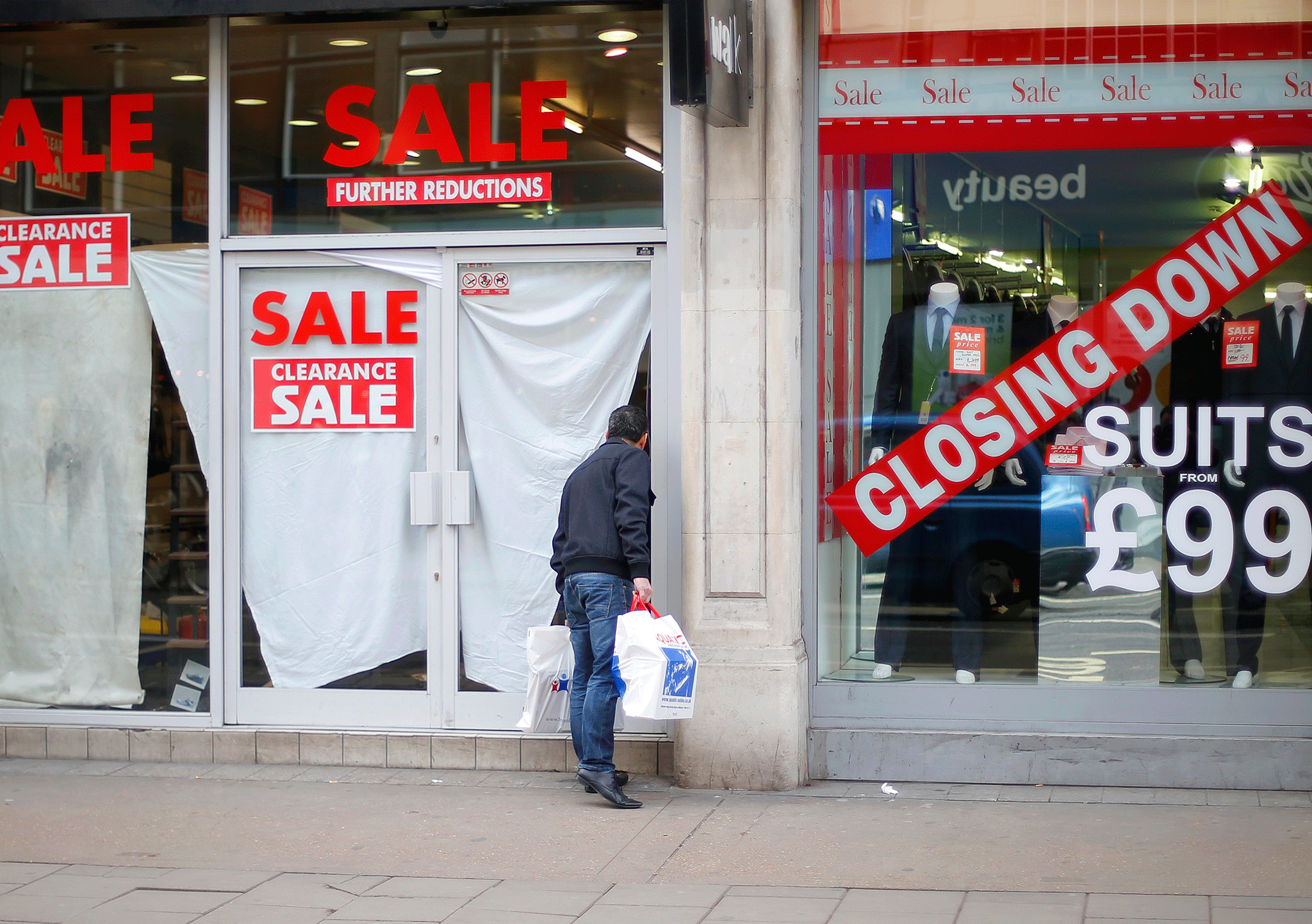UK interest-rates rise could send thousands of companies to the wall as financial distress reaches 'unprecedented levels'
Up to a quarter of a million ‘zombie firms’ are only being kept alive by access to extremely cheap credit and a pool of flexible, inexpensive labour – both of which may soon dry up, according to research

The number of struggling UK businesses has soared to “unprecedented levels” since the Brexit vote, and an interest-rate rise this week could push hundreds of thousands of firms over the edge, experts have warned.
Business turnaround specialists Begbies Traynor found that close to half a million firms (448,011) are experiencing significant financial distress, up 27 per cent from 352,552 a year ago when the impact of the UK’s decision to leave the EU had yet to be felt.
The worrying figure could climb even higher if the Bank of England begins to turn off the tap of cheap money with an interest-rate rise on Thursday, Begbies Traynor said. It warned that up to a quarter of a million businesses are “zombie” firms, meaning they don’t have enough capital to grow and are only being kept alive because of access to extremely cheap credit and a pool of flexible, cheap labour – both of which may soon dry up.
Rising interest rates combined with an increasing minimum wage and a recent crackdown on firms dodging National Insurance payments mean many struggling companies will run out of cash and go to the wall, the report said.
The figures illustrate the tightrope walk facing the Bank of England as it attempts to rein in rising inflation and ballooning consumer debt without choking off economic growth by raising interest rates too much or too fast.
The Bank’s Monetary Policy Committee meets on Thursday and is widely expected to increase its benchmark rate to 0.5 per cent from a record low of 0.25 per cent.
“The number of firms experiencing significant financial distress has reached unprecedented levels over the past 12 months, as businesses in search of growth have overstretched themselves, taking too many risks after being lulled into a false sense of security by the continued low-interest-rate environment,” said Julie Palmer, a partner at Begbies Traynor.
She added that “no section of the economy has ended the last 12 months unscathed”, following a spate of downbeat economic updates, showing everything from rising inflation and increasing corporate insolvencies to slumping retail sales and the further decline of the UK’s vital construction sector.
Inflation hit 3 per cent in September, one per cent above the target set by the Government. Any further rise would require Bank of England Governor Mark Carney to write a letter to Chancellor Philip Hammond explaining why the BoE has not kept inflation lower.
An interest-rate rise could be doubly damaging for many UK businesses because shoppers have increasingly fuelled their spending with debt, as wage increases have failed to keep pace with rising prices, propelled largely by the slump in the value of the pound.
Borrowing on credit cards, personal loans and car finance is growing five times faster than earnings, according to Begbies Traynor’s research.
“My biggest concern is on the UK’s ever-expanding consumer-credit bubble, which could burst at any minute, knocking the consumer industries and financial sector for six,” Ms Palmer said.
“While the prospect of an interest-rate increase will of course go some way to addressing this, the knock-on effect for many struggling businesses with high levels of debt could be severe.”
Significant financial distress increased across every sector and region of the UK over the past year, with the professional and financial services sectors being worst affected, the research found.
The support services, construction and retail sectors had the highest volume of businesses in distress over the period.
To establish “significant” distress the researchers combined a number of indicators such as County Court Judgments (CCJs) filed against firms for unpaid debts, as well as key financial measures of things like working capital, contingent liabilities, retained profits and net worth.
Subscribe to Independent Premium to bookmark this article
Want to bookmark your favourite articles and stories to read or reference later? Start your Independent Premium subscription today.

Join our commenting forum
Join thought-provoking conversations, follow other Independent readers and see their replies